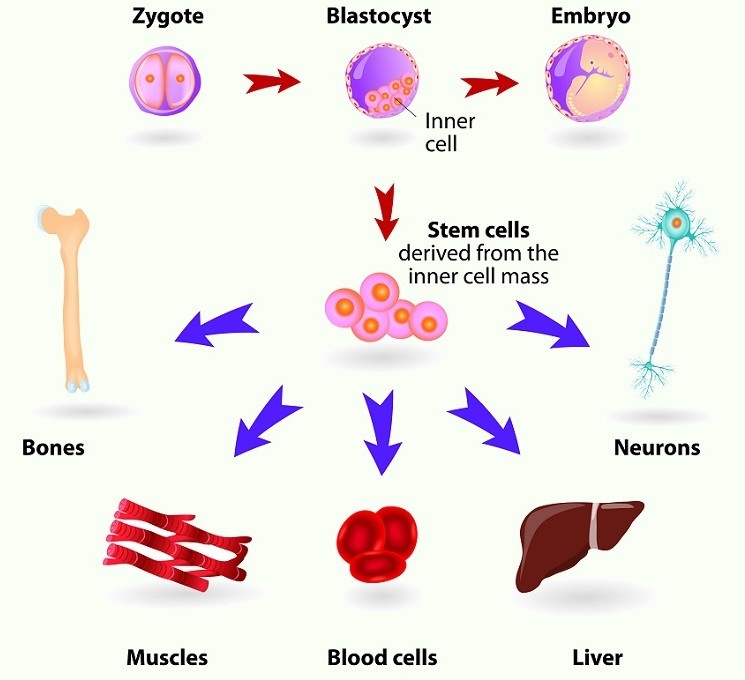
Given that all cells in human body carry and propagate further the same Genetic Code OR the master blue print; how come there are vast variability in what cells and tissues they produce at different cell division instances where the daughter cells are different from mother cell in appearance, structure, functionality and characteristics?
Cell Division Mechanism:
- Well, the genetic material ( DNAs ) unwind and align at the cell equator …. to get unzipped and for getting replicated fully.
- The two members of each pair are pulled apart by a micro-muscle ( mitotic spindle ) ; so that they go to two daughter nuclei poles.
- Then the two daughter cells grow and split at mother cell’s equator plane.
Not all DNA segments get executed in each cell; the segments where “bookmarks” are placed, defining starting and ending of executable part of code for the cell, get selectively read and executed ( termed as expressed and unexpressed gene ) for producing corresponding protein / enzyme products.
- Each cell thus carries DNAs entwined with bookmarks for that cell and cell division carries further also the bookmarks along with the code.
- When there is a differentiation on cell division the bookmarks must be shifted according to the executable code segments for producing the new type of cell.
- Along with the Code of construct obviously the bookmark management / logic must also be there in the master blue print.
The vast variety that is produced (only some representative examples) :
1. Bone Cells: Cells extrude out protein fibres which bind Calcium and form a hard and rigid matrix and the cells ( osteoblast ) get themselves buried in it. Length of structural bones is controlled by central chemical messenger ( hormones ). The critical intricate shapes and suiting of bone joints is done by bone carving function … where ( osteoclast ) cells at the bone surface suitably dissolve away the bone mass locally to suit the joint functionally. Bones grow outwards radially and gets dissolved at outer surface. Equilibrium of synthesis and dissolution determines existing bone mass / thickness.
2. Lung Cells and Intestinal Cells which interact with external media: They identify the useful matter on outer side, ingest them in only to transport bulk of it on opposite side to blood.
3. Glands: They produce, store and secrete the produce … some of them have muscles around them which could possibly squeeze them.
4. Muscles: They produce actin – myosin fibres which move telescopically one in other like hydraulic cylinder, depending upon messenger chemical ( neurotransmitter ) level in its vicinity. So they produce movement and force.
5. Skin: Layers grow outward from inner layer as the outer layer gets worn out
6. Neuron: Makes electrical connections and configurable ionic channels in its structure to produce / carry current and modify themselves based on usage history.
7. Blood / Lymph : Variety of loose cells which can circulate around
There is robustness, local autonomy and redundancy but growth can happen only at the right time e.g., a lizard can grow again its snapped tail but the tail cannot grow back the severed lizard, despite any amount of hoodwinking in terms of forced nutrition and impressed conditions.
AVINASH KHARE